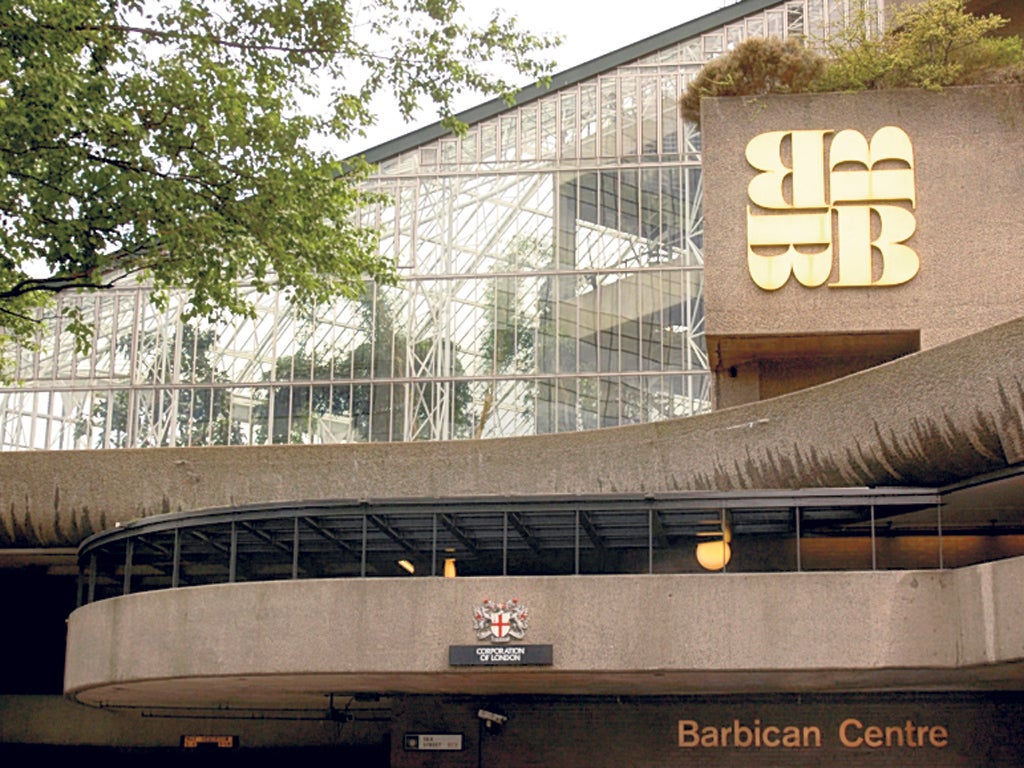What will the arts centre of the future look like?
As austerity bites, the temples of culture will have to change, says Nicholas Kenyon

In the years after the war it was a utopian vision of what an arts centre could be: theatres, galleries, halls and cinemas, not cut off from life, but placed at the heart of a residential estate.
That estate was a result of an idealistic post-war aspiration for what a civilised life could be, backed by exceptional resources from the City of London Corporation. But by the time the Barbican Centre opened in 1982, 30 years ago this month, its style was out of fashion and it has taken three decades of reassessment, improvement and changing taste for the Barbican now to be declared an icon of its style, a model of architecture that has at its core (like the Bauhaus movement which is the subject of our next big exhibition) the enlightened life and the practice of the arts.
Across the arts, the issue now is how to reflect radically changing taste, and changing behaviour in our many audiences. All arts centres that were built as temples of culture have this challenge: the imposing portico of the Royal Opera House, the massive rotunda of the Royal Albert Hall, the post-war sleekness of the Royal Festival Hall – are they off-putting for audiences who never dare to cross their thresholds? Even more recent arts centres are built to impress: one that really does welcome and include everyone is Sage Gateshead where, in spite of its gleaming structure, the building is full of education and outreach activities.
At the Proms we found that the spaces of the Albert Hall, which could easily appear overwhelming, were actually exciting and thrilling for new audiences. At the Barbican, our spaces may be cast in concrete, but our foyers have proved wonderfully flexible in accommodating learning and education events, pre-show and post-show stages of live music, and late-night parties. Just in the past two weeks we have had an extraordinary buzz in our spaces around the visit of the New York Philharmonic and then our Urban Weekender, which filled the foyer spaces with stories of the City.
There is a major sea change in arts venues which indicates how they will need to be re-imagined and designed in the future. As Rob Harris of Arup has pointed out, the audience now wants to belong. They want to feel at home, to participate, and feel a sense of ownership. The old top-down model whereby arts administrators told them what was good for them, what to listen to or see, is past – it is a much more collaborative relationship now. We are feeling this effect throughout our programme. It applies, for instance, to orchestras: rather than one-night stands by visiting orchestras, we build relationships, primarily with our resident LSO, but also with the new range of International Associate Orchestras: – the Concertgebouw and Jazz at Lincoln Center orchestras will soon arrive for concentrated periods of concerts and learning work.
So we need to make the walls of the Barbican porous, connecting with the City and east London beyond, expanding our spaces so that with two new cinemas up the road on Beech Street, and then the Guildhall School's major new building on the street front opening next year, we have an immediate, accessible offer to the public. Arts centres need to be more welcoming, more sustainable, and placed more firmly at the centres of our communities. At a time of real challenge to our social and economic framework, the arts should be at the centre of urban life, not at the periphery, drawing together libraries, schools, restaurants, open spaces, venues and meeting places to offer a pattern of integrated but flexible activity that improves the quality of everyone's life. That would make the best possible case for the arts as we move forward in the age of austerity.
Nicholas Kenyon is managing director of the Barbican
Join our commenting forum
Join thought-provoking conversations, follow other Independent readers and see their replies
Comments